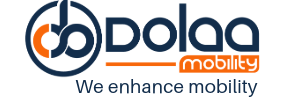On-Demand Transport: A Revolution in Commuting
Explore how the concept of “on-demand” represents a groundbreaking leap in transportation, fundamentally reshaping our understanding of convenient travel.
In the fast-paced world we live in, where convenience is key, the evolution of transportation has taken a giant leap forward with the advent of On-Demand Transport (ODT). From its roots in dial-a-ride services to the current era of app-based solutions, ODT is reshaping how we perceive and experience commuting. This article explores the intricacies of On-Demand Transport, unraveling its impact on traditional transportation norms and envisioning its future role in public transit.

What is On Demand Transportation?
On-Demand transport, also known as Demand-Responsive Transport (DRT) or Microtransit, is a revolutionary concept that allows passengers to book rides at their convenience using technology. Whether it’s summoning a taxi, hopping on a shuttle, or utilizing app-based pick-up options, ODT caters to the modern commuter’s need for flexibility and ease of use.
Evolution and Diversity: The journey of On-Demand Transport has been a fascinating one, evolving from traditional phone-based bookings to today’s sophisticated app services. The ubiquity of smartphones has unlocked a myriad of commuting options, ranging from scooters to traditional taxis. ODT is not just a mode of transport; it’s a dynamic force that adapts to our ever-changing lifestyles. Beyond individual rides, On-Demand transport is reshaping public transportation networks worldwide. State transportation agencies are increasingly focusing on these flexible, agile services to enhance existing networks, reduce costs, and increase overall efficiency. The era of On-Demand Public Transport is upon us, challenging the status quo and offering a glimpse into the future of commuting.
Smart Buses and Future Vision: At the heart of On-Demand Transport’s impact is the concept of smart buses—vehicles that adapt routes based on real-time passenger demand. This innovation addresses the common grievances of passengers and bus operators alike: the dislike for waiting and the inefficiency of empty bus stops. On-Demand Transport envisions a future where public transportation is not only convenient but also efficient and visible to the passenger.
Changing Perceptions: On-Demand transport is not just transforming how we move; it’s challenging cultural perceptions tied to specific modes of transportation. In many developing nations, owning a private vehicle is often considered a status symbol. ODT, with its flexibility and accessibility, is breaking down these barriers, opening up opportunities for a broader segment of the population and challenging traditional notions of wealth and status.
Enhancing Passenger Experience: Beyond the hype, On-Demand Public Transport is a delicate balance between convenience and vehicle efficiency. It reduces wait times, enhances safety during evening commutes, and eliminates the hassle of finding and paying for parking before switching transport modes. By prioritizing the passenger experience, ODT is emerging as a transformative force in the realm of transportation.
Communication is Key: The successful implementation of On-Demand Transport hinges on effective communication with passengers. Articulating the benefits, such as productive wait times and increased safety, is crucial in encouraging a shift in commuter behavior. A well-designed and intuitive app, communicating these advantages, is the linchpin in making On-Demand Transport a viable and attractive option for commuters.
Empowering Commuters: On-Demand Transport is not just a service; it’s a shift in power dynamics, putting the choice back in the hands of the commuter. This shift, coupled with a compelling and passenger-centric experience, positions On-Demand Transport as the future of public transportation. Commuters are no longer bound by fixed schedules or rigid routes; they have the freedom to choose services that align with their preferences and lifestyles.
As On-Demand Transport continues to redefine the commuting landscape, its impact on efficiency, accessibility, and the overall passenger experience cannot be overstated. Embracing this evolution not only benefits individual commuters but also paves the way for a more connected, efficient, and sustainable future of transportation. The On-Demand Transport revolution is here, and it’s time for commuters to seize the opportunity to shape the way they move.
Source: Liftango
Author
dolaaadminRelated posts
Employee Commute: Empowering the Indian Women Workforce
Embarking on the daily commute is a shared experience for many working individua
2024-2029: Five years to deliver the Green Deal’s mobility promises
Demand Responsive Transport (DRT) solutions have been a fixture in developed nat
What is On-demand Transit and Why Does Your City Need It?
The concept of “on-demand transit” has significantly reshaped transi

